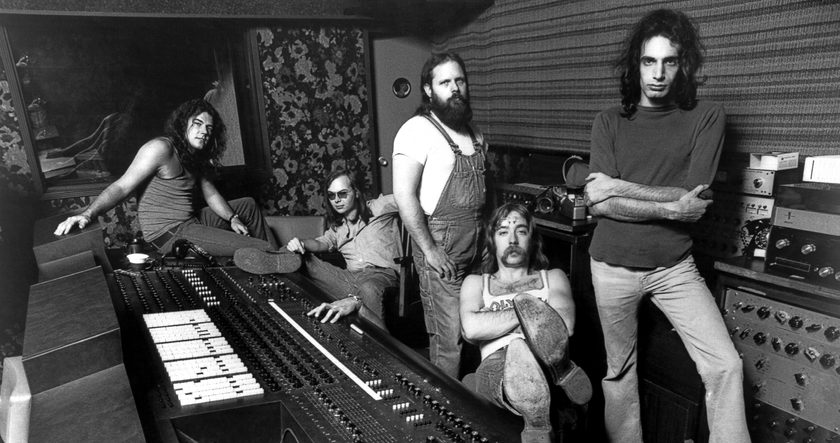The music theory behind the hits: stars’ techniques explained
Find out why deadmau5, Prince, Hans Zimmer and The Chainsmokers sound like they do

Music theory might not be something that many artists talk about, but it can certainly help to explain why a lot of stars have signature songwriting styles.
Here, we discuss four artists and dissect their musical predilections.
For more genre-spanning music theory advice, check out the September issue of Computer Music (CM246), which is on sale now.
deadmau5
The progressive house icon (aka Joel Zimmerman) has a distinctive style that hinges on his production workflow and the way he builds his chord voicings - the order in which the notes are arranged across the keyboard.
He tends to rely on progressions that feature mostly major chords, but arranged and voiced in a way that makes them sound minor (such as the beautiful I Remember: B - Dmaj7 - Gmaj7 - F# - Dmaj9 - Gmaj7). Joel often finishes off with a prominent, majestic-sounding shift from a minor chord to a major chord (Some Chords: Abm, E, E, F#, Ab; or Ghosts N’ Stuff: Bbm, Ab, F#, Eb).
That minor-major shift crops up often, and because of his programming style, a four-note chord will be spread over three or four octaves rather than bundled in the centre of the keyboard.

Prince
His canon of songs forms a remarkable legacy that will undoubtedly stand the test of time, and is filled with all manner of classic songwriting techniques.
Get the MusicRadar Newsletter
Want all the hottest music and gear news, reviews, deals, features and more, direct to your inbox? Sign up here.
Although much of his work was in the pop, R&B and funk genres, most Prince songs could easily pass the acoustic test - ie, you can strip away all the production and still recognise the song when played on an acoustic instrument such as guitar or piano. They’re also pretty timeless, a quality that owes a fair amount to the simplicity of the basic underlying chord structures.
Taking the famous power ballad Purple Rain as a typical example, the chord structure is relatively simple, giving us four chords in the verse (Bb, Gm, F, Eb) and the same four in a different order in the chorus (Eb, Bb, Gm, F). Melody-wise, the song relies on a Gm blues scale, with the first notes in the verse striking a D/Db blue note, and the last notes before the chorus repeating an E over the F major, effectively making an F7.

Hans Zimmer
Of all the Hollywood film composers active today, Zimmer is one of the most well known, and for good reason: his scores have accompanied over 150 blockbusters, including Gladiator, Inception and Man of Steel - a remarkable achievement for someone who claims not to be able to read music.
Although incredibly imaginative and prolific musically, Zimmer’s real strength is in using sound in innovative and unusual ways. To accompany the Joker’s scenes in The Dark Knight, for instance, he used a single long cello note, together with guitars played with pieces of metal, gradually rising in pitch to convey a sense of mounting tension and fear. Although he strives to avoid repetition in his work, Zimmer seems to favour minor keys, often bucking the trend by juxtaposing them against comedic scenes that would normally suit a major key. Somehow, it works!

The Chainsmokers
The Canadian duo have dominated the mainstream of late with a string of classy productions. From a theory point of view, they tend to favour progressions that feature a mix of three basic major and minor triads, but often with a sustained note tacked on at the top to give the chords a more extended sound.
For example, the chords to Closer alternate between Db, Eb and Fm, but with a high Eb added to each one, effectively making it Db9, Eb and Fm7. This is coupled with a simple yet insistent vocal or synth hook built from only two or three notes, proving the old adage that simple is effective.
Computer Music magazine is the world’s best selling publication dedicated solely to making great music with your Mac or PC computer. Each issue it brings its lucky readers the best in cutting-edge tutorials, need-to-know, expert software reviews and even all the tools you actually need to make great music today, courtesy of our legendary CM Plugin Suite.

“He would lead you down the garden path with quite a bog-standard chord structure and then suddenly go AWOL”: From David Bowie to Radiohead and Steely Dan, here’s some of popular music’s most outlandish theory choices

How learning and understanding chord symbols can prove a major benefit for sharing your musical ideas
Most Popular





